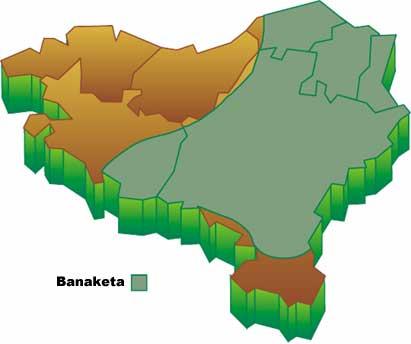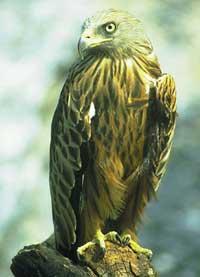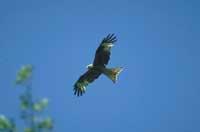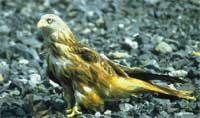Red kite

It is one of the most elegant flying that dances next to the swirls of air. Therefore the English know the red kite with the name of red kite or red kite. Among the Basques this animal has also been known since always. This was described by Dassance and Elisfran in 1923 in the magazine Gure Herria, known as the white kite: “Mirua is a wonder in the air: whenever you want, the blades do not move. White is also not like this: it can color better. The tail is quite long on both sides, shorter in the center.”

These Nordic authors perfectly described the body of this bird as rust or reddish brown. The facade is decorated with dark lines and the light eyes stand out on the gray head. It also has wax and yellow legs. Both sexes have a similar coloration and young people are distinguished by being more brown than adults.
Knowing this medium-sized predator in flight is not difficult. It is longer and slender than the hawk. Above all the red long tail, very sparked. On the other hand, it carries the blades without extending them completely and, although the tip of the lumens is black, underneath presents large white scars giving the feeling that it lacks some feathers. It has a body of 60-66 cm, but its wing width is very large, over one and a half meters. However, its weight is a few kilos. Due to its large surface and lightness, its energy expenditure is low and seems to float in the sky. Thus, using the tail as a motto, the red kite is the Maya fly.
Despite the use of breeding trees, the red kite uses recreational areas for hunting. Therefore, it wants places like lush forests, pastures and agricultural land, scrubland, or rural environments.
After a beautiful wedding flight, choose the tree to nest at a height of between 6 and 20 meters. Although it is able to build a new one, it often arranges old nests of candles or shovels. In the nest of both species of milano can be found a lot of very special materials that can help us to separate from the nests of other predators. Thus, in addition to the usual branches, papers, towels, plastics, waste, etc. that leads, give the nest a rather dirty look. A single start begins in the morning, around March. 3 days lays 2-3 45x57 mm eggs.
Its color is white and decorate some reddish pints. After a month of warming of the females, it proceeds to the birth of the chickens dressed in gray plumes. At 7 weeks, even if they leave the nest, they will spend another 4 weeks in the shelter of their parents. Between 10 and 12 months later they will change plumage and with 2 years they will begin to grow.

Winter mortality is not high, since 82% of adults manage to spend the year and some specimen can reach 20 years. One of the reasons for this is that food is fed in areas of high availability, very fond of farms and landfills. In addition, although he eats small birds and mammals, he is not able to demonstrate an excessive skill in his hunting and can be said to be a regular hunter. Thus, their typical game pieces are wounded or sick animals, massacres, dead fish, insects, etc., or stolen from other predators. On many occasions, along with vultures, corvids and other scavengers, we will be able to see prepared to clean the dead reses.
As for the distribution of the red kite, it can be found in Europe in the temperate and Mediterranean place of the continent and in Africa in the north. The largest populations are in the Iberian Peninsula. In Euskal Herria the distribution is different in each region. In Navarra it is normal nesting and some estimates indicate that there are about 200 couples. In the Autonomous Community is located in the southwest of Alava, in the surroundings of Entzia and Treviño. In Iparralde, finally, we find it almost everywhere.
This great glider is a partial migrant. The population of central Europe is migratory and, after breeding, heads south before the red winter arrives. The milestone passes take place in our region from August to early November, with highs at the end of September. Return for February. Although the black kite is more abundant throughout the year, in winter the red kite from the continent predominates and in some places you can sleep in large series forming groups of 100 and more. The most important winter regions are the Iberian Peninsula and Italy.

As already mentioned, the red kite is easily recognizable, but we cannot forget the most similar species: the black kite ( Milvus migrans). The latter can be known for its darker appearance and for not having the tail so sparked. But, among other things, the distribution of the black kite is wide in the world and that of red much smaller. The first is a long-distance migrant while red is a partial migrant. Although they seem, they are different species. But how could these two species be created?
The black and red dove separated during the last glaciation. As a result of the cold, milanos would head south and there isolate themselves in two groups for thousands of years. Later, as time warmed, these two populations would expand overlapping their distributions, but they could no longer cross them with each other, as in isolated times they became different species. In any case, knowing the red kite can be easier than understanding the origin of the species. And those who say they don't know a single bird, have a unique opportunity to distinguish it. You have to look at the tail...
Species: Milvus milvus |





